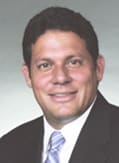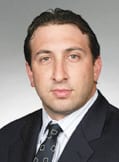The Equity Pie: How to Carve Up An ASC
Whether buying or selling a piece, here's how to protect your interests.

Today's ambulatory surgical center transactions have evolved, with multiple ASCs often competing over the same physician buyers and corporate investors—which are almost always health systems and ASC management companies. Armed with years of marketplace experience, today's knowledgeable ASC buyers and investors have become more disciplined in determining an ASC's true value.
Generally, ASC transactions fall into three categories: (1) physician syndication, essentially a sale to a group of physicians; (2) physician buyback or redemption; and (3) sale to a corporate investor. Here, we will attempt to provide a clear and useful explanation of the key legal and business issues that physicians are likely to encounter in an ASC transaction and that are critical to an ASC's long-term success.
Physician Syndication
The sale of ownership interests to physicians who bring cases to the ASC is an important factor in determining an ASC's success. Selling equity interests in the ASC to physicians who regularly use the facility solidifies their relationship to the ASC. Additionally, their cases are quite profitable since there is little additional overhead associated with their procedures. Also, physician ownership is often a prerequisite to consummating a sale to a health system or ASC management company.
A physician syndication involves two key questions—how much to sell and for what price. Under the federal anti-kickback statute, the ownership percentage being sold cannot be tied to the past or anticipated volume of a physician's procedures. Additionally, the purchase price must be consistent with fair market value.
An ASC's purchase price is typically based on the ASC's earnings before deducting interest, taxes, depreciation and amortization (EBITDA). This gross earnings number is then multiplied by a fair market value multiple, minus the ASC's long-term debt, then multiplied once more by the percentage to be acquired by the physician buyer.
The fair market value multiple paid by national ASC companies and health systems (historically in the 5x to 8x range) should be distinguished from the 2.5x to 4x multiple an ASC typically receives when selling interests to an individual physician for a minority interest. The justification for the lower multiple used in a sale to physicians is tied to the limitations and restrictions imposed on their ownership interests (eg, minimal voting rights, transfer restrictions, buy-back provisions and a non-compete).
The buy-in price may still be a significant hurdle for a potential physician investor. For example, assume an ASC with $1 million in EBITDA and $0 debt sells a 10% equity interest to a physician at a 3x multiple, then the purchase price would be $300,000 (ie, $1 million x 3 = $3 million; $3 million x 10% = $300,000). Importantly, neither the ASC nor its owners may loan monies to a physician for the purpose of acquiring an equity interest in the ASC.
Due to the potentially significant buy-in price, some ASCs are exploring alternative methods of accommodating new investors. These strategies include selling fractional interests or arranging financing through a lender familiar with the ASC's performance. With interest rates near historic lows, an ASC may also consider a dividend recapitalization that involves increasing the ASC's current long-term debt by borrowing more money. The additional debt depresses the ASC's valuation. The borrowed money could be used for an ASC's capital improvements or distributed to the existing owners, allowing them to put some extra money in their pockets.
Group practice ownership is another trend that has emerged—particularly among ophthalmology practices. This structure has two distinct advantages. First, it may allow more flexibility in how ASC profits are allocated to physician users. Second, it may offer a useful basis for departing from the fair market value purchase price requirement.
A successful physician syndication should include a governing document (ie, operating, shareholder or partnership agreement) that addresses decision-making, buyback events, restrictive covenants and other issues critical to owners' roles in the facility. ASC owners would be well-advised to review their facility's governing document to make sure it takes into account all of the latest “bells and whistles” applicable to the ASC industry.
Physician Buybacks
A physician who profits from the cases being performed in an ASC, but who doesn't actually use the ASC as an extension of his or her practice, is often a major source of discontent among the remaining productive physician owners. Accordingly, an ASC must retain the right to repurchase the ownership of its physician owners. An ASC's governing document or operating agreement should set forth an agreed-upon mechanism for buying out physician partners. Typical redemption events include a partner's death, disability or retirement. Those, however, are not the entire universe of buyback events.
The anti-kickback statute ASC investment safe harbor includes two tests that are often found in an ASC's governing document as a basis for repurchasing a physician's interest. First, a physician-owner must derive at least one-third of his or her medical practice income from the performance of Medicare-covered ASC procedures (ie, the one-third income test). Second, a physician-owner must perform at least one-third of his or her Medicare-covered ASC procedures in the facility in which such physician has an ownership interest (ie, the one-third use test). While the one-third use test only applies in a multispecialty ASC, it is commonly included in ophthalmologist-owned ASCs involving multiple subspecialties. Other buyback triggers may include a litany of “for cause” events, including a physician's practice relocation or medical license suspension. Incorporating a provision that allows a partnership to vote out a member without cause has also been a growing trend.
The governing document should set forth the redemption price calculation. The formula may be a multiple of EBITDA (ie, similar to the buy-in price) subject to a further discount if the buyout relates to a “for cause” event. Other redemption price formulas include a return of capital contribution (less any distributions received) made by the departing investor, an independent appraisal, or an agreed-upon amount determined by the ASC's board and subject to change each year. Unlike the buy-in price, the buyout price is not required to be consistent with fair market value.
ASCs whose governing documents do not expressly address a physician-owner's buyback may find themselves scrambling for tactics to eliminate uncooperative dead-weight physicians. One approach that has proven effective is the “squeeze-out” merger, which involves the squeezed-out physician receiving a fair market value payment for his ownership interests while the remaining physicians receive ownership in the surviving entity.
Sale to Corporate Investors
Partnering with a health system or ASC management company may be an attractive opportunity to an ASC's physician-owners. The corporate investor is often willing to pay a high multiple and physician-owners receive favorable capital gains tax treatment on the substantial purchase-priced proceeds—a 15% capital gains tax rate through 2011, as opposed to the 35% ordinary income rate that applies to ongoing distributions. Partnering with a health system may also allow the ASC to enhance its commercial payor reimbursement rates.
There are typically three aspects of a corporate investor transaction. First, the investor's purchase of a substantial equity interest in the ASC. Second, the terms of the governing agreement. Third, the terms of the ongoing management agreement between the ASC and the corporate investor.
The ownership percentage acquired is often between 20% and 51%. Health systems typically favor owning at least 50.1%, but most investors are flexible and will consider purchasing a higher or lower percentage depending on each ASC's unique situation. A critical issue to the corporate investor is its ability to exercise control over the ASC's operations. For some ASC management companies, that control may be essential in order to consolidate the ASC's revenue. For a not-for-profit hospital or health system, it will involve addressing certain tax exemption concerns.
Whatever the rationale, physicians selling interests to a corporate investor should generally expect to relinquish substantial control of their ASC. These issues can be addressed through the governing agreement resulting from the transaction. Physician-owners will need to negotiate certain minority rights prohibiting the corporate investor from making material decisions without the physician-owners' consent. With regard to ongoing management arrangements between the ASC and its corporate investor, management fees often range from 3% to 11% of the ASC's net revenue, depending on the scope of services being provided by the company.
Conclusion
ASCs remain an attractive investment opportunity for physicians, health systems and other corporate investors. An understanding of recent transaction trends and the key legal and business issues likely to be encountered should help an ASC and its physician-owners to conclude a successful ASC transaction. OM


| Mr. Sokol (jsokol@mwe.com) and Mr. Kaye (jkaye@mwe.com) are partners of McDermott Will & Emery and co-chairs of the firm's ASC Practice Group. |








